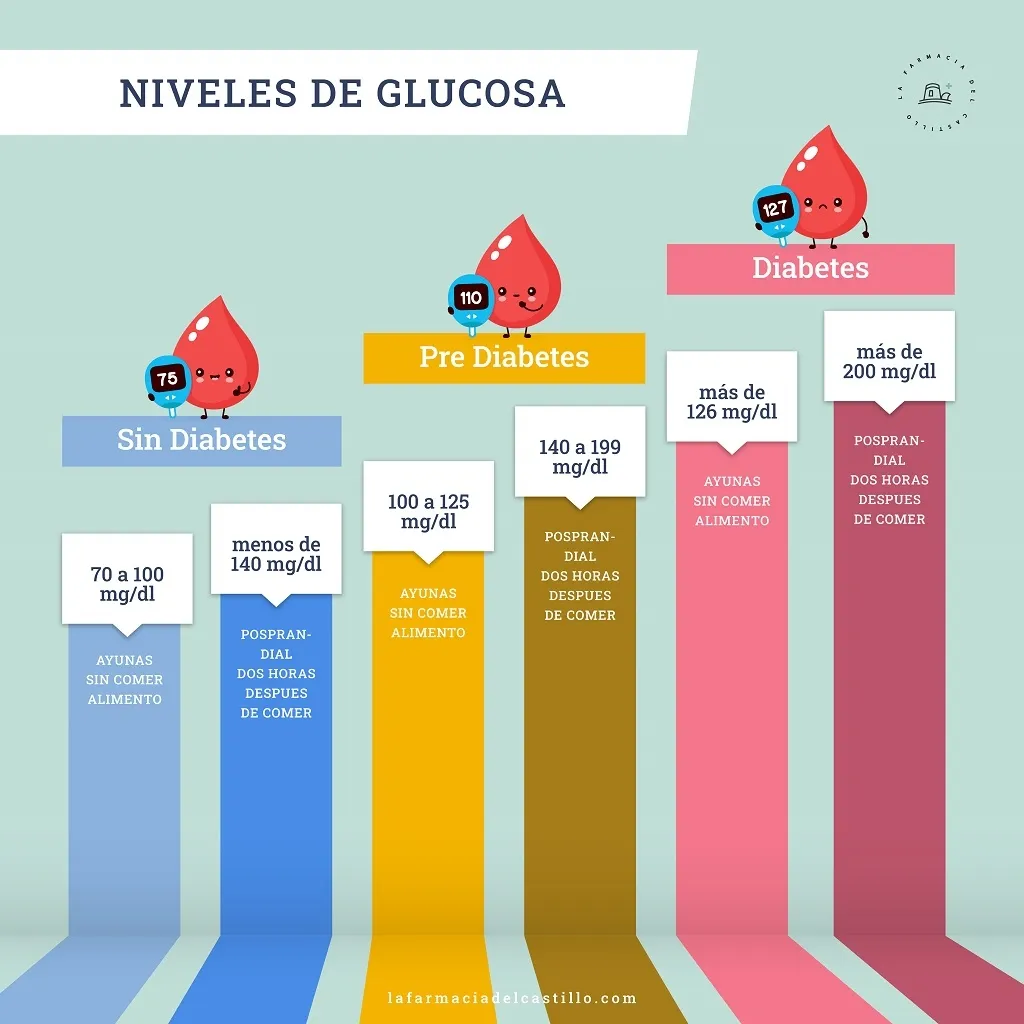When you have diabetes, good blood sugar control must be regularized, since your increase could show complications in the body.The absorption of sugar quickly becomes energy by the brain and nerves will need a constant supply, since it is one of the macronutrients, next to fats and proteins, which provide us with energy.
Glucose is obtained by foods rich in carbohydrates such as cereals (rice, wheat, oatmeal, millet, sorghum or corn), artisan pasta and breads, quinoa or sarracene wheat, fresh fruit and dehydrated fruit, tubers like cassava, potato, carrot, pumpkin and sweet potato, vegetables and honey.These would be healthy options to acquire glucose, but there are also insane sources such as sweets, chucheías, candies, sugar gum, pastries and confectionery, juices, cookies and breakfast cereals, soluble cacaos, sauces (ketchup, sour sauce,Barbecue sauce, César sauce), ice cream, yogurts and sugary dairy, precooked or frozen foods to heat and voila, among others, that we must avoid.
What is the ideal level of blood glucose?
The World Health Organization considers 100 mg/dl of blood sugar as fully normal.On an empty stomach, when the amount of glucose in the blood is measured at least eight hours after a meal, the range is between 70 and 100 mg/dl.When sugar is between 100 and 125 mg/dl, there is talk of altered basal blood glucose and 126 mg/dl or more would indicate a diagnosis of diabetes.
Industrial pastries is one of the insane glucose sources not recommended for diabetes.Source: Unspash,
If you have type 1 diabetes the American association for diabetes recommends that blood sugar should be 90 to 130 mg/dl for adults.After meals, 1 to 2 hours after eating, blood sugar should be less than 180 mg/dl in adults.Once the day is over, blood sugar must be 90 to 150 mg/dl for adults.
If type 2 diabetes is suffered, the association recommends that, before meals, blood sugar is 70 to 130 mg/dl for adults and that after meals, one two hours after eating, sugarIn the blood it must be less than 180 mg/dl for adults.
Keep in mind that these indications will vary according to the person, because other factors such as age, stress, physical activity, if other medications are taken or another disease is suffered, will influence the blood sugar level.
when the levels are low (hypoglycemia)
When blood sugar levels are too low, which would be below 72 mg/dl, we would be talking about hypoglycemia.The symptoms are:
- Sweating
- Hunger feeling
- Weakness
- Palencia
- Sensation of dizziness
- Tremors and nervousness
- Palpitations
- Irritability
The reduction of blood sugar intake is dangerous for our body because, as we have mentioned before, the nerves need it constantly.Do not eat, increase physical activity or consume alcohol can be some of the causes.
when the levels are high (hyperglycemia)
When glucose levels are high and for a long time, the consequences are serious.These are the symptoms:
- Frequent desire to urinate
- Increased thirst
- Headache
- Fatigue
- Difficulty concentrating
The reasons can be to consume more carbohydrates than the recommended, not to take enough insulin in the event that it suffers from diabetes, not perform physical activity, dehydration and side effects of some medications such as steroids.


